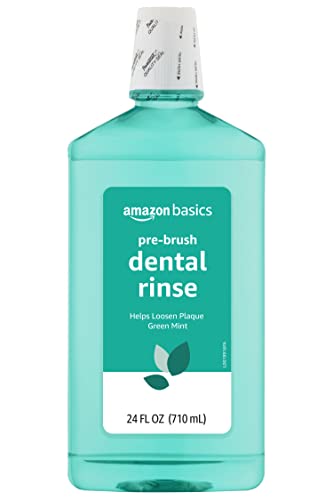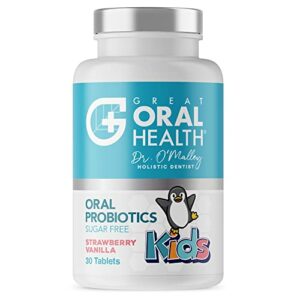In our step-by-step guide titled “How to prevent side effects from dental rinses,” we aim to address the concerns and provide helpful tips for individuals who use dental rinses. This guide focuses on preventing any potential side effects that may arise from using these oral hygiene products.
Freshen your breath and protect your teeth
Choose the right dental rinse
Research and consult with your dentist to find a dental rinse that suits your needs and is less likely to cause side effects. Look for rinses that are alcohol-free, fluoride-free, and gentle on the gums. Consider the specific requirements of your oral health, such as sensitivity, gum disease, or dry mouth, and discuss them with your dentist. They can provide valuable guidance and recommend the best dental rinse for you.
Follow the instructions
Read and follow the instructions provided with the dental rinse carefully. Start by carefully reading the instructions to ensure you understand how to use the rinse correctly. Use the recommended amount of rinse as indicated in the instructions, and follow the recommended duration of rinsing. It is important to avoid excessive use, as this can lead to potential side effects.
Use the rinse at the right time
- Wait for at least 30 minutes after brushing your teeth before using the dental rinse.
- Avoid rinsing immediately after brushing as it may wash away the protective fluoride from the toothpaste.
- By waiting, you allow the fluoride to fully penetrate and protect your teeth, maximizing its benefits.
- Remember, timing is crucial when using dental rinses, so be patient and give your teeth the best care they deserve.
Do not swallow the rinse
Dental rinses are designed to be spit out after use. Swallowing the rinse can lead to stomach discomfort and other digestive problems. To ensure your safety, thoroughly rinse your mouth with the dental rinse and then spit it out.
Rinse with water afterward
After using the dental rinse, rinse your mouth with water. This will help remove any leftover residue and reduce the risk of potential side effects. It is important to maintain good oral hygiene by thoroughly rinsing with water after using the dental rinse.
Monitor for any adverse reactions
Pay close attention to any unusual sensations or reactions that you may experience after using the dental rinse. If you notice any discomfort, irritation, or allergic reactions, it is important to immediately discontinue use and seek advice from your dentist. Your well-being is our priority, and we want to ensure that you receive the necessary care and guidance for any adverse reactions you may encounter.
Maintain good oral hygiene
Regular brushing is an essential part of maintaining good oral hygiene. Make sure to brush your teeth at least twice a day using a soft-bristled toothbrush and fluoride toothpaste. Start by placing the toothbrush at a 45-degree angle to your gums and gently move it in circular motions. Be sure to brush all surfaces of your teeth, including the front, back, and chewing surfaces.
Flossing is another crucial step in keeping your teeth and gums healthy. Take about 18 inches of dental floss and wrap it around your middle fingers, leaving about two inches of floss in between. Gently slide the floss between your teeth, using a back-and-forth motion and curving it around each tooth in a C shape. Be thorough and reach all areas, including the back teeth.
Visiting your dentist for regular check-ups is important for maintaining good oral health. Schedule a dental appointment every six months, or as recommended by your dentist, for a comprehensive examination. Your dentist will check for any signs of decay, gum disease, or other dental issues and provide appropriate treatment if needed.
To complement your oral care routine, consider using dental rinses. These rinses can help reduce plaque buildup, fight bacteria, and freshen your breath. Follow the instructions on the product label and swish the rinse around your mouth for the recommended amount of time. Remember that dental rinses should not replace brushing and flossing but rather be used as an additional step in your oral hygiene routine.
Remember, maintaining good oral hygiene is crucial for overall health. By following these steps and making them a habit, you can keep your teeth and gums healthy and prevent dental problems in the long run.
Consult with your dentist
- If you have any concerns or questions about using dental rinses, consult with your dentist.
- Schedule an appointment with your dentist to discuss your specific oral health needs.
- During the appointment, share your concerns and ask any questions you may have about dental rinses.
- Listen to your dentist’s advice and recommendations regarding the use of dental rinses.
- Follow any instructions provided by your dentist to ensure proper use of dental rinses for your oral health.
- If you experience any adverse effects or have further questions after using dental rinses, contact your dentist for guidance.
Minimizing discomfort and irritation
In conclusion, we hope that this blog post has provided you with valuable information on how to prevent side effects from dental rinses. We understand that dealing with any kind of discomfort or adverse reactions can be frustrating and discouraging. However, by following the simple steps outlined in this post, you can minimize the risk of experiencing side effects and keep your oral health in check. Remember to select the right dental rinse for your specific needs, carefully follow the instructions provided, and avoid swallowing the rinse. Additionally, rinsing with water after using the product and maintaining good oral hygiene practices will further aid in preventing any unwanted side effects. Lastly, if you do encounter any adverse reactions, be sure to monitor them closely and consult with your dentist for further guidance. Your oral health is important to us, and we are here to support you in maintaining a healthy and comfortable dental care routine.
Safeguarding your oral health
Step-by-Step Guide to Using Dental Rinses
- Read the instructions: Carefully read and follow the instructions provided with the dental rinse. This will give you a clear understanding of how much to use and how long to rinse for
- Measure the correct amount: Use the measuring cap or cup that comes with the rinse to ensure you are using the correct amount. Using more or less than recommended may affect its effectiveness
- Swish and gargle: Pour the recommended amount of rinse into your mouth and swish it around vigorously for the specified time. Make sure to also gargle, so that the rinse reaches the back of your throat
- Spit, don’t swallow: After rinsing, do not swallow the rinse. Instead, spit it out into the sink. Swallowing dental rinse can be harmful, as it often contains ingredients that are meant for external use only
- Avoid eating or drinking afterward: To maximize the benefits of the dental rinse, it is generally recommended to avoid eating or drinking for at least 30 minutes after rinsing. This allows the active ingredients to continue working
- Remember, if you have any concerns or questions about using dental rinses, it is always best to consult with your dentist or healthcare professional
Frequently Asked Questions about Dental Rinses
Are there any specific brands of dental rinses that are recommended by dentists?
Yes, there are specific brands of dental rinses that are often recommended by dentists. Some of these brands include Listerine, Crest, Colgate, and ACT. These dental rinses are widely available and have been clinically tested to help maintain oral hygiene. However, it is important to note that the specific brand recommended may vary depending on an individual’s oral health needs. It is advisable to consult your dentist to determine which dental rinse would be most suitable for you.
Are there any additional tips or recommendations for getting the most out of dental rinses?
Yes, there are a few additional tips and recommendations that can help you get the most out of dental rinses. Here they are:
- Follow the instructions: Always carefully read and follow the instructions provided on the dental rinse product. Different rinses may have specific usage guidelines and recommended durations. Adhering to these instructions will ensure you use the rinse effectively.
- Use the right amount: It’s important to use the recommended amount of dental rinse as indicated on the product label. Using more or less than the recommended amount may affect its effectiveness.
- Timing matters: The best time to use a dental rinse is typically after brushing your teeth. This helps to eliminate any remaining bacteria and debris, leaving your mouth feeling fresh and clean. However, always check the instructions for specific recommendations.
- Swish thoroughly: When using a dental rinse, make sure to swish it around your mouth thoroughly for the recommended duration. This allows the rinse to reach all areas of your mouth, including the gums and between teeth, where plaque and bacteria may accumulate.
- Don’t rinse with water immediately: Avoid rinsing your mouth with water immediately after using a dental rinse. This can dilute the effects of the rinse. Instead, spit out the rinse and refrain from eating or drinking for at least 30 minutes afterward.
- Be consistent: Regular use of dental rinses is key to maintaining good oral hygiene. Incorporate the rinse into your daily routine, using it as directed and consistently. This will maximize its benefits and help improve your overall oral health.

















